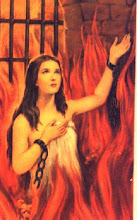The song begins with many staccato bursts from several aerophones and some chordophones. The chordophone in this instance are plucked and not played with a bow in order to give a scampering, light-hearted effect. The chordophones are repeatedly played in this manor through the piece. The instrumentation is mainly chordophones, violins and cellos, mostly. But a flute can be heard from time to time. The instrumentation is complex, especially since there is a single singer in the composition. There are so many instruments that the stage is crowded. Yet with all the other instruments the soloist remains the center of attention, as she is the person who is front and center and the only one with the spotlight.
The singer’s part is very ornamented and wavers between periods of joyous staccato and sweeping, vibrato filled notes that correspond to longer notes played by the chordophones. When the chordophones are plucked, she is staccato, so the instruments are clearly meant to follow her singing. In the middle she sings something that recalls laughter. The mood of the entire piece is jovial and sanguine. Toward the end of the song, the chordophones and the singer play longer notes faster, signaling the climax of the song. And of course, such a jovial song ends on a high note.
Monday, March 29, 2010
Subscribe to:
Post Comments (Atom)

I think this Donizetti would be an example of a first-half of the 19th century bel canto Italian opera. From the beginning to 2:30 is the slower and more lyrical Cantabile. From 2:30 on is the Cabaletta, which is noticeably more lively and allows the performer to display her virtuosity. I think there would normally also be a visual representation of action to signify the change from Cantabile to Cabaletta, but this is a concert performance of the aria.
ReplyDelete